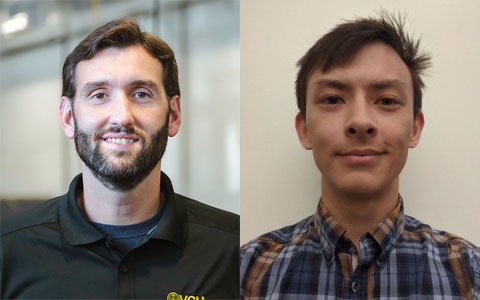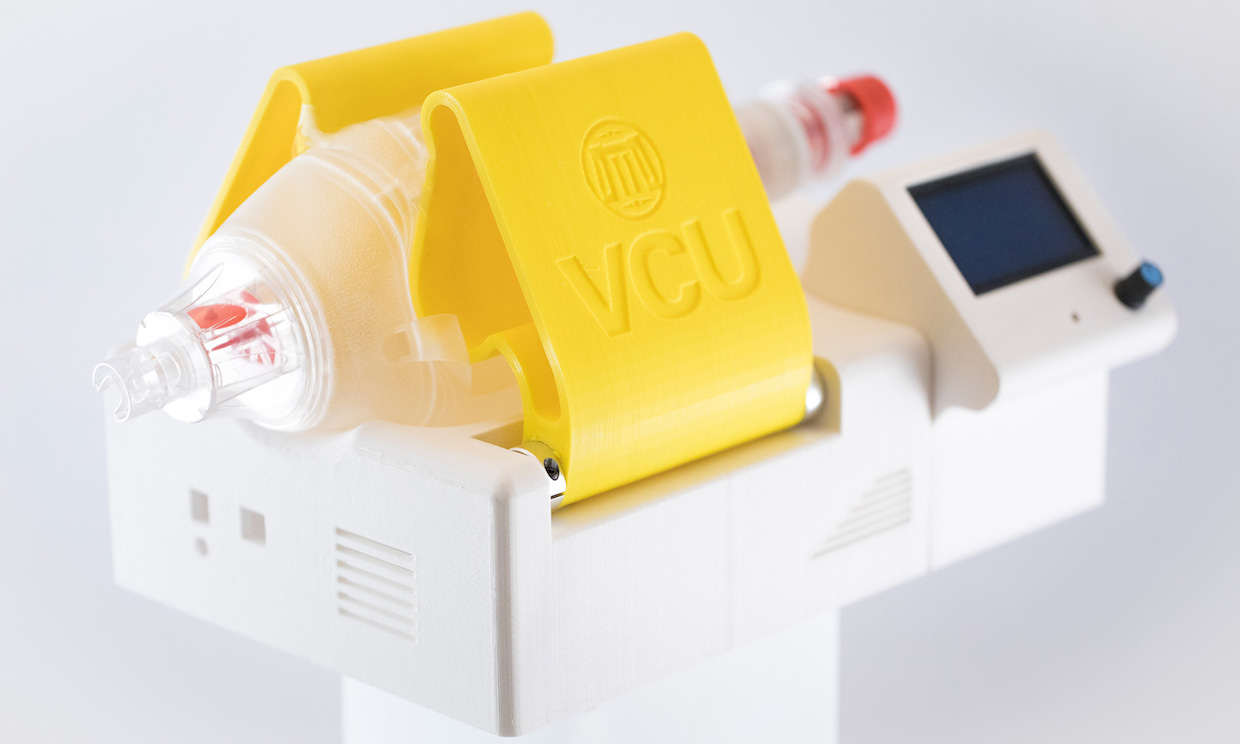To address supply shortages resulting from COVID-19, an interdisciplinary team at VCU has designed a ventilator that hospitals, health systems or makerspaces can produce using a few tools and a 3D printer.
Charles Cartin, Ph.D., associate professor of mechanical and nuclear engineering and director of makerspaces for VCU Engineering and Adam Hamel, the lab technician for the Mechanical and Nuclear Engineering Innovation Lab, worked with Benjamin Nicholson, M.D., and Peter Pidcoe, Ph.D., D.P.T., to develop the ventilator.

Cartin and Hamel drew on the best practices from engineering — and engineering education — to help create a kit for a ventilator that non-engineers can fabricate easily. It comprises readily available, off-the-shelf parts and a few components that can be 3D-printed in a university or makerspace setting using open-source programs and plans.
Parts are one thing, but how do you take a complex design and make it something the layperson can create?
“We approached it in the same way that we educate engineering students,” Cartin said. “They need a set of materials and clear instructions. It’s kind of like it was when you were in high school shop class. We give you a box of parts, and a step-by-step process to put them together.”
Think of it as a home-delivery meal kit, but for a medical device.
“In this case, with all hardware, medical device components and 3D-printed parts in hand, one should have a functioning ventilator within hours,” Cartin said.
